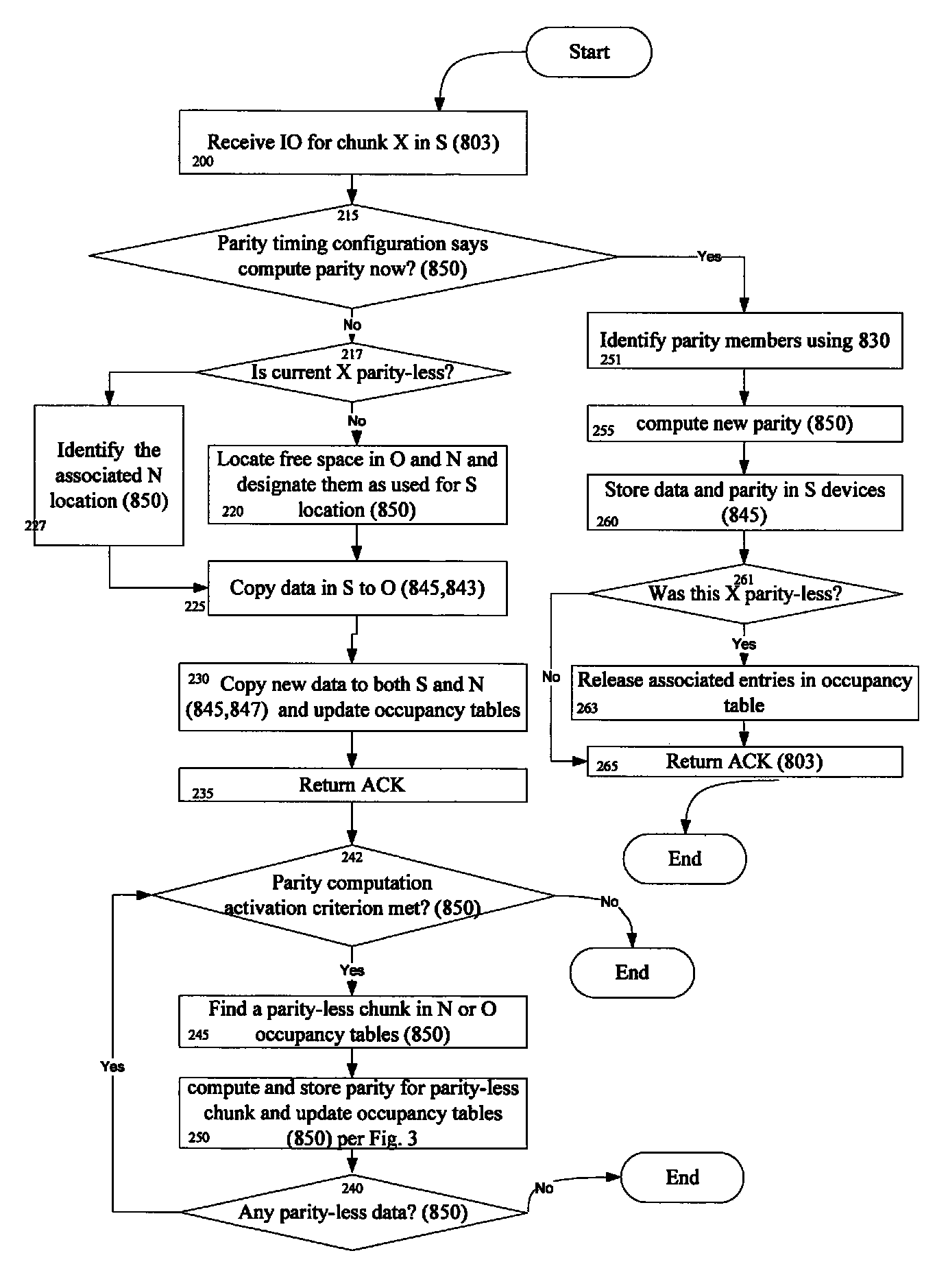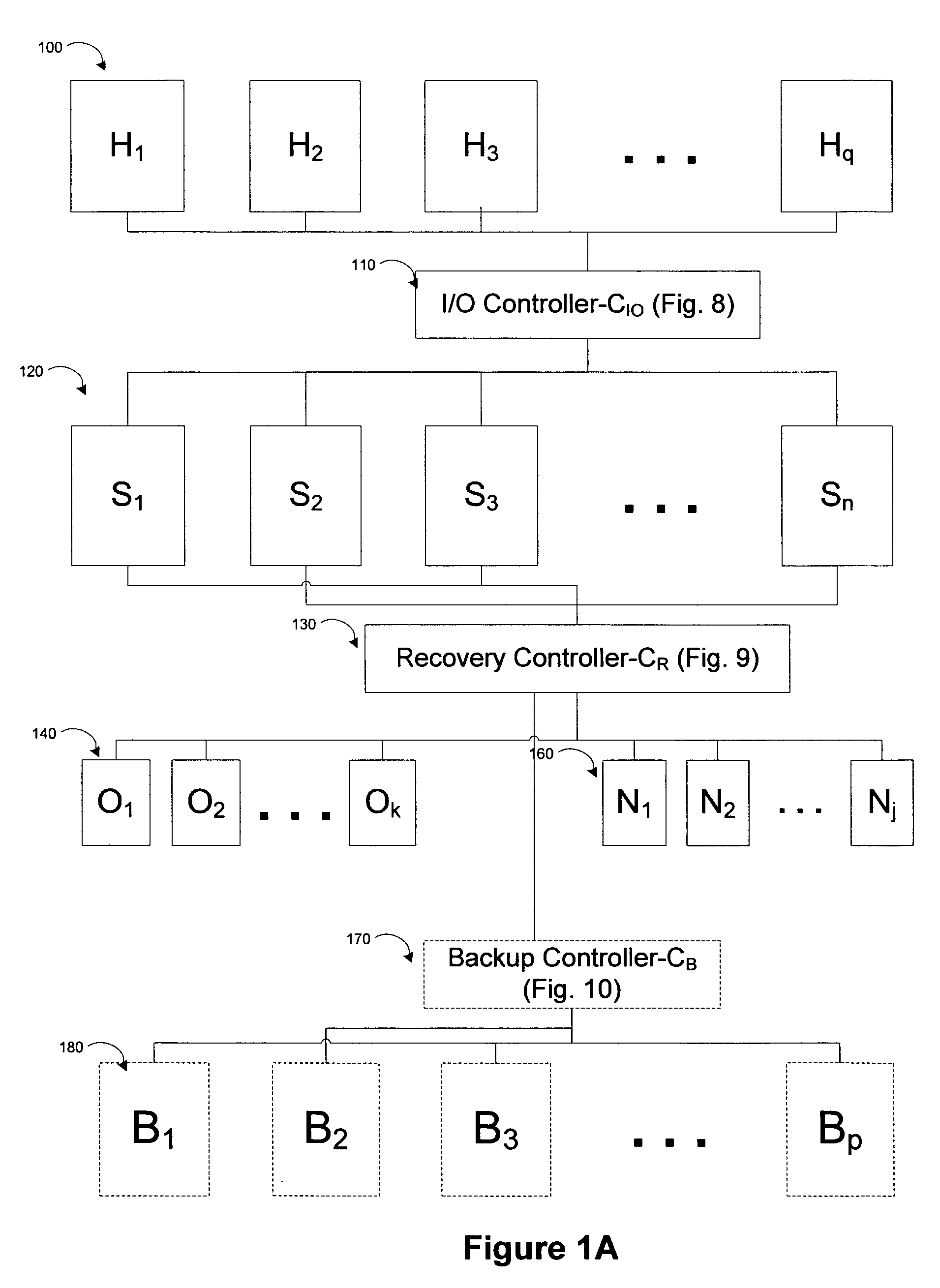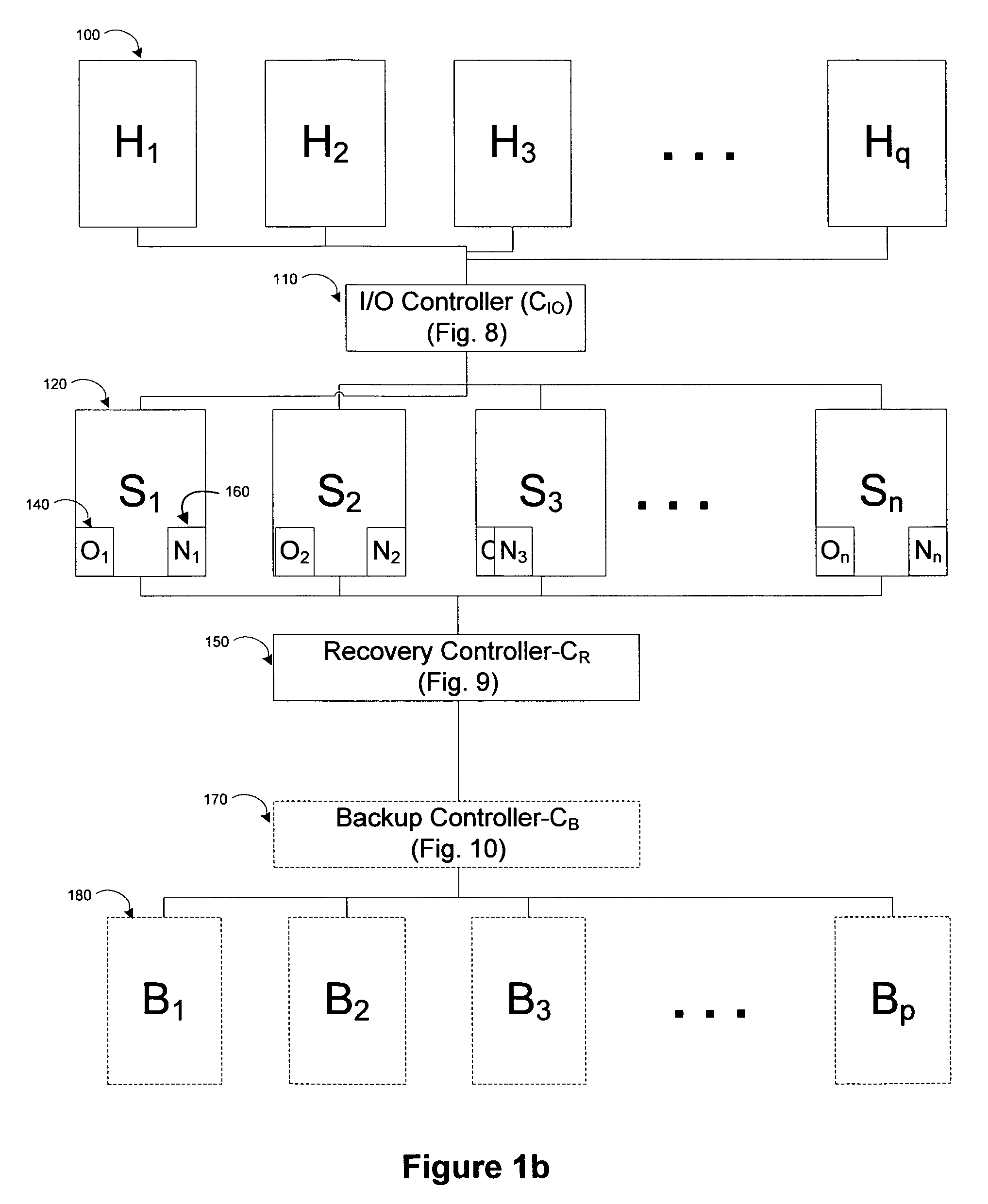System and methods for RAID writing and asynchronous parity computation
a parity computation and system technology, applied in the field of storage systems, can solve the problems of inability to correct the recovery of data, failure to compute, and create complexity, and achieve the effects of increasing the frequency of parity computation, increasing the frequency of de-staging, and reducing the availability of storage in the pre-parity storage area
- Summary
- Abstract
- Description
- Claims
- Application Information
AI Technical Summary
Benefits of technology
Problems solved by technology
Method used
Image
Examples
Embodiment Construction
[0129]FIG. 1A is a simplified functional block diagram of a computer storage management system for managing a first plurality of computer storage units operative to store data each including at least a second plurality of corresponding data portions, the system comprising a pre-parity storage area; a parity RAID writing and asynchronous parity computation manager operative to manage a stream of writing operations and to asynchronously compute at least one parity, including, upon occurrence of at least one write operation in which an incoming value is to be written into an individual computer storage unit from among the computer storage units, depositing the incoming value in the individual storage unit, thereby to define an individual data portion stored therewithin, and in the pre-parity storage area and computing and storing a parity combining the incoming value with the values of those data portions, in the computer storage units other than the individual computer storage unit, w...
PUM
 Login to View More
Login to View More Abstract
Description
Claims
Application Information
 Login to View More
Login to View More - R&D
- Intellectual Property
- Life Sciences
- Materials
- Tech Scout
- Unparalleled Data Quality
- Higher Quality Content
- 60% Fewer Hallucinations
Browse by: Latest US Patents, China's latest patents, Technical Efficacy Thesaurus, Application Domain, Technology Topic, Popular Technical Reports.
© 2025 PatSnap. All rights reserved.Legal|Privacy policy|Modern Slavery Act Transparency Statement|Sitemap|About US| Contact US: help@patsnap.com



